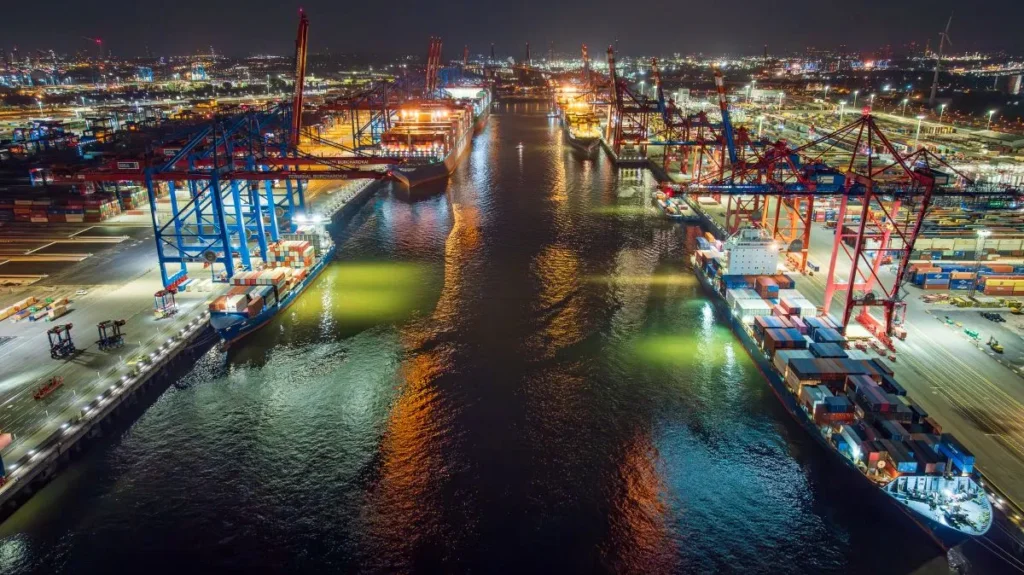Between January and March, the German port handled 2.0 million TEU (twenty-foot equivalent units), equivalent to 19.9 million tonnes, in what it described as its best first-quarter container result in three years. Overall seaborne cargo throughput rose by 3.1% to 28.3 million tonnes.
According to port authorities, the increase was driven by a recovery in Far East trade and the launch of new liner services connecting Hamburg with India. Container traffic with India grew by 39.6% to 60,000 TEU, while shipments from Malaysia rose by 50.6% to 54,000 TEU. Volumes from China, Hamburg’s largest trading partner, rose by 11.3% to 597,000 TEU.
In contrast, trade with the United States declined significantly. Container throughput on the US lane fell by 19.0% to 145,000 TEU, which port officials attributed to high warehouse inventories built up towards the end of 2024 and the early effects of new policies under the Trump administration.
General cargo volumes increased by 4.7% to 20.2 million tonnes, including a 3.5% rise in conventional general cargo to 280,000 tonnes. Bulk goods remained largely stable at 8.1 million tonnes, a slight decline of 0.8%. While throughput of suction cargo such as grain fell by 14.3%, liquid cargo volumes rose by 23.6%. Grab cargo, including coal and ores, dropped by 5.8% amid weaker demand related to the energy transition.
Transhipment volumes also showed signs of recovery, climbing by 15.3% to 723,000 TEU. This was attributed to new liner services and the realignment of shipping company alliances.
Hinterland container traffic reached 1.3 million TEU, marking a 1.8% increase. Of that, 645,000 TEU were transported by rail, a modest 0.7% rise compared to the same period last year, based on preliminary figures.
“Despite ongoing geopolitical and economic challenges, the Port of Hamburg has managed to stabilise and, in some areas, expand its role in European freight transport,” the port said in a statement accompanying the figures.









